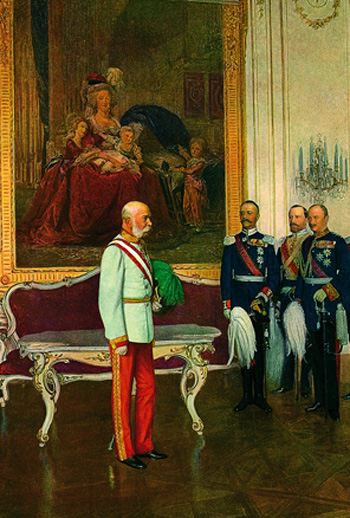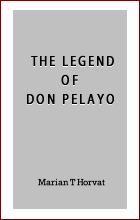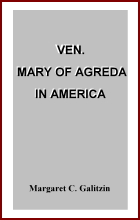Ambiences and Tendencies
 |
 |
 |
 |
 |
 |
 |
Franz Joseph Receiving Wilhelm II
& the German Princes

The meeting has some antecedents. Franz Joseph was celebrating 60 years as Emperor. He had ascended to the throne very young caused by the abdication of his uncle, who was a descendent of the Emperors of the Holy Roman German Empire.
In a very simplified historical summation, we could say that for at least part of his term as Emperor he was the head of all the German-speaking peoples. The Holy Empire had been abolished, replaced by Napoleon with an organization called the German Confederation and the Emperor of Austria was its hereditary president. Franz Joseph was, therefore, president of that Confederation.
In 1866, Prussia led a colligation of German States against the Emperor of Austria and expelled him from the German Confederation. He became Emperor of Austria-Hungary in 1867, and the rest of German-speaking peoples formed another Empire under the direction of Kaiser Wilhelm II. The Confederation was made up of various Kings and Princes who were lords of the German territories, but the Kaiser was the chief of them all.
Franz Joseph, therefore, although he came from one of the oldest German and European dynasties and certainly the most illustrious of them all, the House of Austria, was expelled from the German Confederation and came to preside over only a conglomerate of States speaking the German, Magyar, Slavic and Italian languages, which was called the Austrian-Hungarian Monarchy.
Thus, at this time he was in a condition to harbor a resentment toward the German Confederation. Since the Kaiser needed his political support, Wilhelm II brought a delegation of German Princes to visit Franz Joseph during the time of the commemoration his 60th anniversary as Emperor.
The scenario for this picture is one of the Emperor’s rooms in Schönbrun Palace where he chose to receive the Kaiser and the German Princes.
We spoke recently about mythification. We can say that this room is highly mythified, in the sense that the splendor of both the military and the State ceremonial are at an apex of gala and pomp, drawing the mind to the highest considerations about Our Lord Jesus Christ.
Franz Joseph is depicted at the left. He is alone before all the other German Princes. At the right in the center, holding his helmet with a large white panache at the height of his chest is Kaiser Wilhelm II. The other officers of the delegation are Kings and Princes of small German States.

The Prussian Kaiser & delegation of German Princes
Someone informed me about some of the others present in the picture: The man with the white beard standing close to the Kaiser is the Regent of Bavaria, next to him in the first row is the King of Saxony and the one near the large picture on the wall is the King of Würtenberg. The one at right wearing a light blue uniform with golden tassels is the Duke of Saxe-Meiningen.
At first sight we have the idea of splendor, a great splendor. We note that everything is luminous: The room has a natural light, a kind of silver light that is reflected on the walls and floor. Looking at the floor, one could say that it is made of a type of precious stone over which these men are standing. The light strikes the table close to Franz Joseph; it glances off the plumes of the helmets of the Princes, it shines in the golden tassels of the Duke, it gleams on the chandeliers and the crystals. On everything is an inundation of light. It glints on the military decorations and the epaulets. Everywhere one notices light and splendor.
On the other hand, we observe that each of these persons is in a position of great composure and respect, proper to one who knows who he is. Each one understands quite well who he is, what he represents and respects himself. He wears his uniform in respect for himself and for his office. The idea behind all this is that, as much as it is humanly possible, the public power and the State should be sublimated, moved by respect for the human creature who is called to govern the State.
We see that the military air of each member of this delegation gives the idea of power and force. Thus, we could say that force, splendor and sacrality are elements that are clearly in view in this picture.
Two different worlds represented
The group at the right represents the Germany dominated by Prussia. We see that the Kaiser has a paper in his right hand, which indicates that he has just read some salutation to Franz Joseph or will read it soon. At the left, the artist caught the figure of Franz Joseph quite well.
Here we have two completely different schools: The new Germany – industrial and military – represented by the Kaiser and those who follow him. The old Germany, sacral, noble, distinguished – a warrior nation, it is true; however, not principally warrior, but patriarchal – represented by the Emperor of Austria.

The Emperor stands apart with a grandeur that dominates the room
He is all by himself; he did not want any entourage to accompany him. On the scales of the balance he weighs as much as all the others together. We have the impression that the others are making a great effort to weigh as much as he does.
His attitude is one of simplicity, there is no arrogance in it. While the others are holding their necks high to give an impression of their value, he is completely natural. Nonetheless, he has much more distinction than the others. Around him is an empty space and no one comes closer.
When we look at his face, we see a man highly conscious of his own mission; he does not need any special adornment to be what he is. Behind him stand centuries of history and glory that give him a right that no force can violate. For this reason he receives his visitants with a serious, affable demeanor, but not smiling.
He has a complaint against those visitors, but he veils it with urbanity. It is as if he were saying: “I am receiving you with simplicity, but you are in my palace, the symbol of my power. This means that I do not admit being dominated by anyone.” This message is sent in an atmosphere of affability, distinction and dignity. The idea is: “My tradition, my right and my sacrality are worth much more than your pretensions.”
There is a symbolic value to the painting hanging on the wall. The painting represents something abominated by the majority of these Princes. These Princes are all, or almost all, anti-French. Austria, on the contrary, in the last period of the monarchy was very pro-France.
The German militarist despises the Austrian charm and the French grace. He believes that everything can be conquered by the sword. This painting represents both the Austrian charm and the French grace, because it represents Marie Antoinette, Queen of France, painted by Madame Vigée le Brun. It is one of the most famous of her paintings and one of the most gracious representing Marie Antoinette.
You know that Marie Antoinette was Austrian. She sent this painting to her mother, Maria Teresa, the Empress of the Holy Roman German Empire and, therefore, a forbearer of Francis Joseph on the Imperial Throne.
In the picture of the two Emperors we find an antithesis of two worlds. On the right, it is the splendor of force, power and richness. At left, shining alone is the splendor of force, power and richness also, but such force, power and richness are considered only secondary things compared to tradition, sacrality and history. This is Franz Joseph.
Today, we do not see heads of State who appear with splendor. Each day such splendor is increasingly rare to find. In everything there is a decline. Nothing is made to induce one to reflect on what is higher and, still less, to lead one to God. In everything vulgarity, not to speak of indecency and monstrosity, is replacing the marvelousness of times past.

Posted February 1, 2016
______________________
______________________








